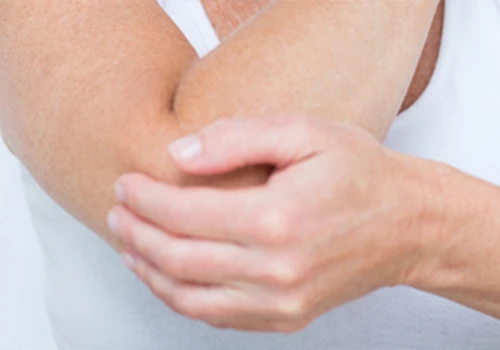Do I use Hot or Cold for an Injury in Coon Rapids MN?
Do I use Hot or Cold for an Injury in Coon Rapids MN
Both hot and cold can be appropriate for the proper situation. It can be confusing at times to know which one might be more beneficial to the other. In this article, we will attempt to break down the pros and cons of each therapeutic treatment in Coon Rapids MN.
HOW INJURIES WORK IN COON RAPIDS MN
An acute type of injury is treated differently than an ongoing overuse injury. Whether to use hot or cold therapy may be indicated by what type of injury is involved.
When an acute type injury happens, the natural reaction of the body is to produce inflammation and swelling to stabilize the joint that has been injured. This is really the body's protective response and when you think about it, a good one, if a joint is injured and shouldn't be used and damaged further. So many times we find patients that try to take drugs to override this response of the body so that they can use the joint further and thereby damage the ligaments and tissues further. Ice therapy can reduce swelling and also numb the pain sensors. This is great so you don't have pain, but just remember why the body tries to swell in the first place! Take it easy on the joint so that the body is able to repair it properly.
When you have over worked and long standing injured muscles they become sore and painful as a result of being over worked and over strained. This is an entirely different type of injury and has to be treated differently as well. The byproduct of a muscle injury in repetitive use is the body develops an accumulation of what is called lactic acid. This is a byproduct of muscle metabolism, which gets stuck in the muscles and causes ongoing muscle pain, and annoying aggravation that never seems to settle down. A common time when this situation may occur would be in a repetitive use syndrome where a person goes to a daily work position and does the same thing repeatedly over time. The body is trying to adapt and process the repetitive strain and eventually the tissues become full of lactic acid and quite painful. In this type of situation, heat can be very therapeutic in enhancing blood flow and opening up the blood vessels to move circulation through congested tissues. This will flush the lactic acid out, bring oxygen to the muscles and restore proper metabolism which give the nervous system a fighting chance to recover and heal properly.
New Patient
Special Offer
CONSULTATION, X-RAYS, (IF NEEDED) AND EXAMINATION FOR ONLY $29!
ONE: USE OF COLD OR ICE THERAPY FOR PAIN RELIEF
Cold packs or ice baths are generally used in acute types of injuries, meaning fresh injuries such as turning an ankle, straining a joint, etc. The natural reaction of the body to an injury is inflammation or swelling of an overstressed injured tissue to protect the joint after injury. Cold will tend to dissipate any type of swelling and numb the pain receptor sites in the injured area.
Ice is used on acute injuries when a joint, muscle, or ligament has been overstrained and stretched such as from trauma. Immediately, the best treatment is to apply ice to the region of injury for a period of 12-15 minutes. Research is very explicit on showing that there are therapeutic benefits in using this time frame. Anything more than that is counterproductive to stimulating the body to promote healing. The way ice pack therapy works is it gives a numbing effect to the pain receptors and decreases the pain level. It also restricts the blood vessels and restricts the blood flow and stops the bleeding and swelling in the tissues of irritation. This will relieve pain and provide the healing process to begin. As a side note, pressure is also great at this point in an injury as well to keep the swelling at bay.
THE TYPE OF ICE PAIN THERAPY AVAILABLE
Ice therapy should always be applied locally to the area of injury. It should not last more than 12-15 minutes at any given time frame. Ice can be applied in the form of an ice pack, freezing a towel in a freezer that's wet, putting snow in a zip lock bag (if living in the northern climate) or using frozen vegetables in the freezer
TWO: USE OF HEAT
Generally speaking heat is used on more chronic types of injuries where a person has been living with a nagging reoccurring pain, stiffness or soreness for over a significant period of time. Heat will bring blood to the area and relax the muscles if it is an ongoing type injury. But, as a general rule of thumb, a person can never go wrong applying ice to an injury or pain first. The primary goal is to dissipate any kind of swelling, as well as numb the pain receptors of an acute traumatic injury that gives you pain relief and heat may bring more blood supply to the area which may cause more swelling. Should a person have reoccurring symptoms and pain, it is best to take the advice of a health care practitioner as ice and heat treatment are not a substitute for a medical evaluation with proper extensive medical treatment.
DIFFERENT TYPES OF HEAT THERAPY
Localized heat can be applied many different ways. They are applied to the topical surface of the skin such as hot packs, wash cloth in a microwave while it's wet and heating up to where it's warm, electric heating pad, moist heat from a hot water bottle, hot wraps that are wrapped around the body, hot baths, saunas, steam rooms, hot showers. While doing these types of hot treatments, it is important number first to not burn yourself. Heat applied directly to the surface of the skin can cause burning and blistering and be quite unpleasant. Secondly, it is important to drinking plenty of fluids to rehydrate your tissues. Heat will tend to dehydrate and dry moisture out of the tissues. It is important when injured or in pain to drink plenty of water to rehydrate.
Other ways of applying heat may be with equipment like lasers and ultrasound that go deeper into the skin.
HOW DOES CHIROPRACTIC FIT INTO TREATMENT OF INJURIES
When you have an injured joint, whether it is acute or long standing, there are both muscles and bones involved. If a joint is injured the biomechanics (or how the joint moves) is usually compromised. If the muscles are involved they pull and tug on the bones in the area, making the joint move in a different way and can cause pressure on the nerves and dysfunctional movement of the body. Having nerve pressure also affects the nerves that communicate the healing of the area (the brain communicates that way to heal the joint). A Chiropractor, and especially your Coon Rapids MN Chiropractor, Dr Ruf can assess the joints and see if indeed there is pressure and get the joints working and the nerves to settle down and start the healing process faster and become more efficient.
I hope this discussion has been helpful in defining the benefits, whether pro or con, when to use hot and cold therapy. Both have their specific purpose and are quite beneficial when used appropriately. I hope this information will give you some ideas. It is not a substitute for proper Chiropractic evaluation or treatment of a health condition. If you feel you need more information or are interested in getting your joints checked out, please feel free to contact our office, Caring Chiropractic Center in Coon Rapids MN.



